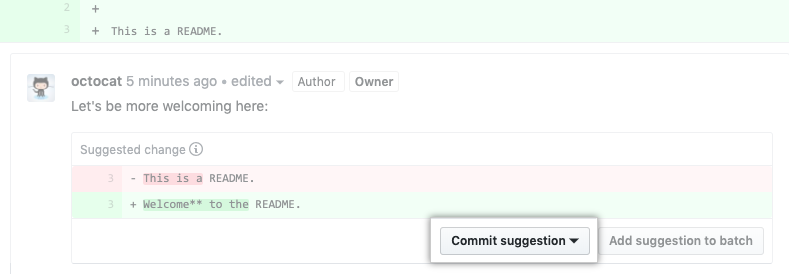8.3 KiB
Contributing
Contributions to the tldr-pages project are most welcome!
All tldr pages are stored in Markdown right here on GitHub.
Just open an issue or send a pull request and we'll incorporate it as soon as possible.
To get started, please sign the
Contributor License Agreement.
Note: when submitting a new command, don't forget to check if there's already a pull request in progress for it.
Guidelines
The basic format of a tldr page is a set of concrete usage examples.
Here are a few guidelines to get started:
- Try to keep pages at around 5 examples. Pages can be longer or shorter when appropriate, but don't exceed 8 examples.
Remember, it's OK if the page doesn't cover everything; that's what
manis for. - When in doubt, keep new command-line users in mind. Err on the side of clarity rather than terseness.
For example, commands that require
sudoshould include it directly in the examples. - Try to incorporate the spelled-out version of single-letter options in the example's description. The goal is to allow people to understand the syntax of the commands, not just memorize it.
- Introduce options gradually, starting with the simplest command invocations, and using more complex examples progressively.
- Focus on details specific to the command, and avoid explaining general UNIX concepts that could apply to any command (ex: relative/absolute paths, glob patterns/wildcards, special character escaping...).
These are all guidelines, not strict rules. Use proper judgement, keeping simplicity and user-friendliness as the top priorities.
When in doubt, have a look at a few existing pages :).
Markdown format
As a quick reference, the format of each page should match the following template:
# command-name
> Short, snappy description.
> Preferably one line; two are acceptable if necessary.
> More information: <https://url-to-upstream.tld>.
- Example description:
`command -opt1 -opt2`
- Example description:
`command -opt1 -opt2 -arg1 {{arg_value}}`
For more detailed page formatting guidelines, refer to the style guide.
Subcommands
Many programs use subcommands for separating functionality, which may require their own separate pages.
For instance, git commit has its own page, as well as git push and many others.
To create a page for a subcommand, the program and subcommand need to be separated with a dash (-), so git-commit.md is shown when calling tldr git commit.
You should always add a base page (e.g. git) that describes the program and basic switches like --version or --help.
To let users know about the subcommand, add a note saying Some subcommands such as `example command` have their own usage documentation to the base page.
See these examples for reference:
Translations
Translation of pages can be done by simply creating the corresponding page within the appropriate language-specific directory, creating that as well if it does not already exist.
Language specific directories must follow the pattern pages.<locale>, where <locale> is a POSIX Locale Name in the form of <language>[_<country>], where:
<language>is the shortest ISO 639 language code for the chosen language (see here for a complete list).<country>is the two-letter ISO 3166-1 country code for the chosen region (see here for a complete list).
The <country> code is optional and should only be added when it is needed. In other words, only when there is a valid reason to distinguish between a language (ll) and its regional dialects (ll_CC1, ll_CC2, etc.). As an example, both fr_FR and fr_BE should fall under the same pages.fr directory, since there virtually is no difference in writing between standard French and Belgian French.
To see the current progress of all translations, you can visit https://lukwebsforge.github.io/tldri18n/, which provides a dynamically updated table of all pages and their translations.
Some examples of valid locale tags:
- French:
fr. - Chinese:
zh. - Chinese (Singapore):
zh_SG. - Portuguese (Brazil):
pt_BR.
A list of translated templates for alias pages can be found in here.
Pull requests that introduce translations are the exception to the single file change per Pull Request rule. It is acceptable for several pages to be translated in one pull request.
Default language for newly added pages
The default language used for pages is English (US). Pages written in English are stored in the default pages directory (notice the absence of a specific language tag). Although not strictly required, if you'd like to add a new page in a different language, please consider creating the English page too.
Inclusive language
Where possible, use inclusive language in the content of pages. For example, prefer terms like "denylist"/"allowlist" instead of "blacklist"/"whitelist", "primary"/"secondary" instead of "master"/"slave", "they" instead of "him"/"her", etc. Of course, this shouldn't sacrifice content clarity, such as when documenting tools where this terminology has specific technical meanings, and its usage is central to explaining the involved concepts.
Submitting a pull request
The easiest way to submit a change is to just edit the page directly on the GitHub interface. Check out the step-by-step instructions (with screenshots) on GitHub Help.
Alternatively, you can do most of the process using Git on the command-line.
Accepting suggestions within a pull request
The easiest way to apply suggested changes is to accept the suggestion made on your pull request. Refer to the GitHub docs for more details.
To commit a suggestion to your pull request, simply click on Commit suggestion:
Commit message
For the commit message, use the following format:
<command>: type of change
Examples:
- For a new page addition:
ls: add page - For a page edit:
cat: fix typo,git-push: add --force example - For a new translation of an existing page:
cp: add Tamil translation - For related changes to several pages:
grep, find, locate: synchronize format of wildcards
Licensing
This repository is licensed under the Creative Commons Attribution 4.0 International License.
The contents of the scripts/ directory are licensed under the MIT license.
Any contributions to this project are governed by the Contributor License Agreement.




